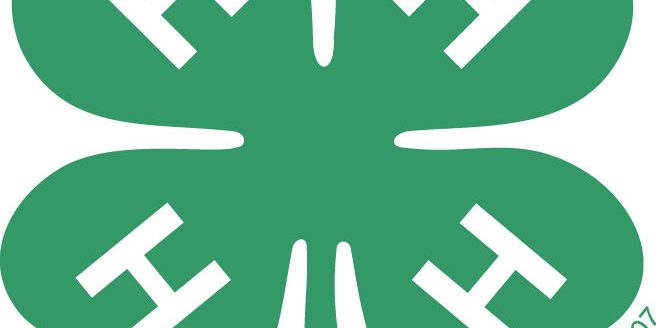In my closet is a box of ribbons from 11 years of 4-H projects. There are a lot of blues, a smattering of reds and whites and a few purples and rosettes. Some have writing on the tag on the back that tells me what year and for what project they were awarded. Many, though, in the haste of post-fair cleanup just got marked in the record book and put in the box.
They represent my growth from a shy 7-year-old giving her first talk about crochet stitches in front of her 4-H club, to a young adult leading a county project training meeting. Every white ribbon led to a blue ribbon, and every blue ribbon to a purple the next year.
Now, many folks look at 4-H through competitive lenses. And there’s nothing wrong with a little push to compete. I’d be lying if I said I didn’t like trophies and shiny hardware. Or that those few white ribbons didn’t sting my pride a little. But if you just look at 4-H as a way to compete for bragging rights on Instagram, then we’ve gotten a long way from what 4-H was originally meant to do for our nation’s youth and their families.
See, it was started more than 100 years ago as a program to help youth and their families gain skills that they needed to be proactive forces in their communities and create innovation for our economy. The turn of the last century saw massive gains in new agricultural developments and household technologies that families needed to understand and adopt for their own good and the good of their rural communities.
It’s never been just about giving out ribbons.
The 4-H program says so right there in the pledge: Use our heads for clearer thinking, our hearts for greater loyalty, our hands for larger service, and our health for better living, for our clubs, our communities, our country and our world. And it’s high time we get back to those roots.
This 21st century has its own challenges to the family unit and our nation. Granted, we’re not as much of an agrarian society as we were in 1919—worrying about turning from mules to tractors and bringing electricity to the rural household. But farms, families and all communities in 2020 still need the skills that 4-H starts building in our youngsters.
Yes, we know that 4-H builds responsibility and entrepreneurship in young people through project work. But those are just the tip of the iceberg of life skills that the program instills.
You thought those were monthly club meetings. But learning to let others have a say, participating in committee work, following procedure—all of those are skills that take us from the boardroom to the U.S. Senate. It’s the very root of bipartisanship and compromise for the greater good.
You thought that was just a community service project to pick up trash. But that sweat equity was actually teaching stewardship of resources and service to our community. It’s really hard to go along with the crowd that’s going to pollute the park with graffiti or trash if you just spent a Saturday morning cleaning up that same park.
You might have thought the Citizenship and Public Speaking projects were just line items to check off on an award application. But they were teaching us how to be active participants in our local, state and federal governments. First you understand the mechanics of government and then you speak up on behalf of those who don’t have a voice—the very principles upon which our nation was founded.
You thought it was just a project showcase in the local nursing home to get recognition for the club. But that weekend afternoon wasn’t so much about the club skit, it was really about compassion and loyalty to everyone in the community. The greatest thing we can do for our young people in this time of crude memes and crassness online is to build their heart muscles to show compassion to others.
That’s how we combat bullying and trolls on social media.
The 21st century is going to demand more of the next generation in terms of leadership and citizenship than anyone could have imagined in 1919. Let’s ask ourselves, are we building young people who can think for themselves and answer challenges that life throws at them? Can they use their knowledge and skills in service to others? Do they understand that by living healthy and active lives they’re helping us maintain a healthy population? Do they know the difference between loyalty and blind allegiance?
It’s not just a pledge. It’s not just a clover. Those aren’t just awards.
For more than 100 years 4-H has been working steadily to build better citizens, kinder neighbors, and engaged adults from the ground up.
We don’t give out ribbons for that, but maybe we should.
Jennifer M. Latzke can be reached at 620-227-1807 or [email protected].
Sign up for HPJ Insights
Our weekly newsletter delivers the latest news straight to your inbox including breaking news, our exclusive columns and much more.


